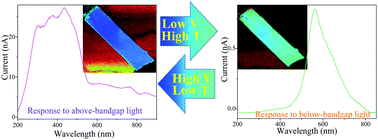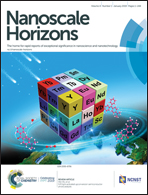Erasable memory properties of spectral selectivity modulated by temperature and bias in an individual CdS nanobelt-based photodetector
Abstract
Single CdS nanobelt-based photodetectors are strongly dependent on bias and temperature. They not only show a strong photoresponse to close bandgap energy light with ultrahigh responsivity of approximately 107 A W−1, large photo-to-dark current ratio of 104, photoconductive gain of 107, and fast response and recovery speed at a large bias of 20 V, but can also show a weak photoresponse to above- and below-bandgap energy light. Moreover, their spectral response range can show tunable selectivity to above- and below-bandgap light, which can be accurately controlled by temperature and bias. More importantly, the modulated spectral response characteristics show excellent memory behaviour after reversible writing and erasing by using temperature and bias. In nanostructures, abundant surface states and stacking fault-related traps play a vital role in the ultrahigh photoresponse to bandgap light and the erasable memory effect on spectral response range selectivity. Given the erasable memory of the spectral response selectivity with excellent photoconduction performance, the CdS NBs possess important applications in new-generation photodetection and photomemory devices.

- This article is part of the themed collection: Horizons Community Board Collection: Advanced Memory Technologies


 Please wait while we load your content...
Please wait while we load your content...